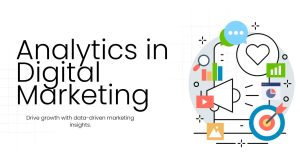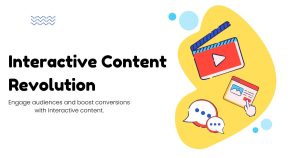Emotional Marketing Ads: How to Connect Hearts and Drive Sales

The most memorable advertisements don’t just showcase products—they make you feel something. That Nike commercial that brought tears to your eyes. The heartwarming holiday ad that made you call your family. The funny commercial you shared with friends on social media. These campaigns succeed because they tap into our emotions first and sell second.
Emotional marketing ads leverage human psychology to create deeper connections between brands and consumers. Rather than focusing solely on product features or competitive pricing, these campaigns target feelings like joy, nostalgia, fear, or inspiration to influence purchasing decisions. When executed effectively, emotional advertising can transform casual viewers into loyal brand advocates.
Research consistently shows that emotional response to advertisements has three times more influence on buying intention than the ad’s content itself. This powerful approach to marketing can dramatically improve brand recall, customer loyalty, and ultimately, your bottom line.
Why Emotional Marketing Ads Work So Well
Human beings are emotional creatures who make decisions with their hearts before rationalizing them with their heads. Neuroscience research reveals that emotions play a crucial role in decision-making, often driving choices faster than logical analysis.
When consumers encounter emotional marketing ads, their brains release chemicals like dopamine, oxytocin, or adrenaline depending on the emotion triggered. These neurochemical responses create memorable experiences that stick with viewers long after they’ve seen the advertisement.
Emotional connections also build trust between brands and consumers. People prefer to buy from companies they feel understand them, share their values, or make them feel good about their choices. This emotional bond often proves stronger than logical factors like price or convenience.
Additionally, emotional content spreads faster on social media platforms. People share content that moves them, whether it makes them laugh, cry, or feel inspired. This organic sharing amplifies your marketing reach without additional advertising spend.
The Core Emotions That Drive Consumer Behavior

Happiness and Joy
Positive emotions create warm associations with your brand. Happy customers become repeat customers and enthusiastic word-of-mouth advocates. Coca-Cola’s “Open Happiness” campaigns exemplify this strategy, linking their product with moments of joy and celebration.
Advertisements that spark happiness often feature:
- Celebrations and gatherings
- Achievement and success stories
- Humor and entertainment
- Surprise and delight moments
Fear and Urgency
While more controversial, fear-based marketing can effectively motivate action. Insurance companies, security systems, and health products frequently use this approach. The key lies in offering hope alongside the fear—presenting your product as the solution.
Effective fear-based ads focus on:
- Loss aversion (what customers might lose)
- Social consequences of inaction
- Time-sensitive opportunities
- Health and safety concerns
Nostalgia
Nostalgic marketing transports consumers to cherished memories, creating powerful emotional connections. This strategy works particularly well for established brands that can reference their heritage or cultural moments.
Nostalgic campaigns might include:
- Throwback aesthetics and music
- References to childhood experiences
- Historical brand milestones
- Generational shared memories
Pride and Achievement
Appeals to pride motivate consumers by connecting purchases to personal identity and accomplishments. Athletic brands excel at this approach, positioning their products as tools for achieving greatness.
Pride-based messaging emphasizes:
- Personal transformation
- Overcoming challenges
- Status and recognition
- Self-improvement journeys
Building Your Emotional Marketing Strategy

Know Your Audience Intimately
Effective emotional marketing ads require deep understanding of your target audience’s motivations, fears, dreams, and values. Conduct surveys, interviews, and social media listening to uncover what truly matters to your customers.
Create detailed buyer personas that go beyond demographics to include:
- Core values and beliefs
- Pain points and frustrations
- Aspirations and goals
- Emotional triggers and sensitivities
Choose the Right Emotion for Your Brand
Not every emotion fits every brand or product. A luxury car brand might focus on pride and achievement, while a family restaurant might emphasize warmth and togetherness. Your chosen emotion should align with your brand personality and customer needs.
Consider your industry, target audience, and brand positioning when selecting emotional themes. B2B companies might focus on confidence and security, while consumer brands often leverage happiness and excitement.
Craft Compelling Stories
Humans are hardwired to respond to narratives. Transform your marketing messages into stories that feature relatable characters facing challenges your product can solve. The most powerful emotional marketing ads feel like mini-movies rather than sales pitches.
Effective brand storytelling includes:
- Relatable protagonists
- Clear conflict or challenge
- Emotional stakes
- Satisfying resolution through your product
Use Visual and Audio Elements Strategically
Images, colors, music, and sound effects significantly impact emotional response. Warm colors like red and orange create energy and excitement, while cool blues and greens suggest calm and trust. Musical choices can instantly transport viewers to specific emotional states.
Pay attention to:
- Color psychology in design choices
- Facial expressions in photography
- Music tempo and key
- Voice tone in narration
Measuring the Success of Emotional Marketing Ads
Traditional metrics like click-through rates and conversions remain important, but emotional marketing ads require additional measurement approaches.

Engagement Metrics
Monitor social media shares, comments, and reactions to gauge emotional impact. High engagement rates often indicate that your content resonated emotionally with viewers.
Track metrics such as:
- Social sharing rates
- Comment sentiment analysis
- Video completion rates
- Time spent viewing content
Brand Perception Studies
Regular surveys can reveal how your emotional marketing efforts affect brand perception over time. Look for improvements in brand affinity, trust scores, and purchase intent.
Neuromarketing Research
Advanced measurement techniques like EEG monitoring and facial coding can provide objective data about emotional responses to your advertisements. While expensive, these methods offer valuable insights for high-stakes campaigns.
Common Pitfalls to Avoid
Emotional Manipulation vs. Authentic Connection
There’s a fine line between emotional marketing and emotional manipulation. Authentic emotional connections build long-term relationships, while manipulative tactics may drive short-term sales but damage brand trust.
Focus on genuinely understanding and serving your customers rather than exploiting their emotions for profit.
Cultural Sensitivity
Emotions and their expressions vary significantly across cultures. What feels heartwarming to one audience might seem inappropriate or offensive to another. Research cultural norms and test your campaigns with diverse focus groups.
Overwhelming Your Message
Strong emotions can overshadow your actual marketing message. Ensure your product or brand remains central to the narrative rather than getting lost in the emotional content.
The Future of Emotional Marketing
Technology continues expanding opportunities for emotional marketing ads. Artificial intelligence can analyze facial expressions and voice patterns to gauge real-time emotional responses. Virtual and augmented reality create immersive emotional experiences that traditional media cannot match.
Personalization engines allow brands to deliver different emotional appeals to different audience segments automatically. As these technologies mature, emotional marketing will become more precise and effective.
However, the fundamental human need for authentic connection remains constant. The brands that succeed will be those that use technology to enhance genuine emotional relationships rather than replace them.
Creating Campaigns That Connect and Convert
Emotional marketing ads represent one of the most powerful tools in modern advertising. By understanding your audience’s emotional landscape and crafting authentic stories that resonate with their feelings, you can build lasting relationships that translate into business success.
Start by identifying the core emotion that best aligns with your brand and audience. Develop compelling narratives that showcase this emotion while highlighting your product’s benefits. Test your campaigns with real customers to ensure they create the intended emotional response.
Remember that emotional marketing is a long-term strategy that builds brand equity over time. While individual campaigns may drive immediate sales, the real value lies in creating emotional associations that influence purchasing decisions for years to come. Invest in understanding your customers’ emotional needs, and they’ll reward you with their loyalty and advocacy.





